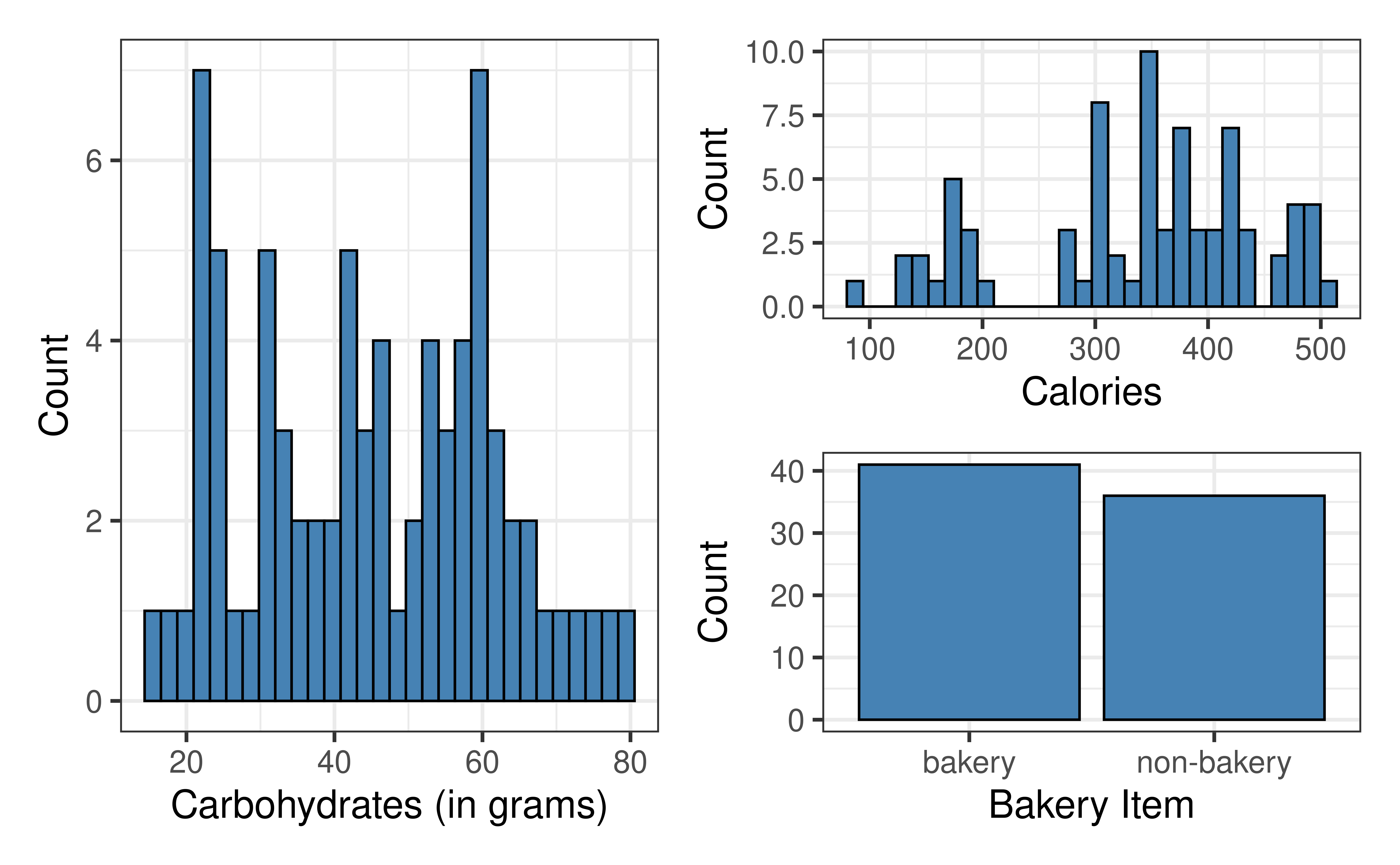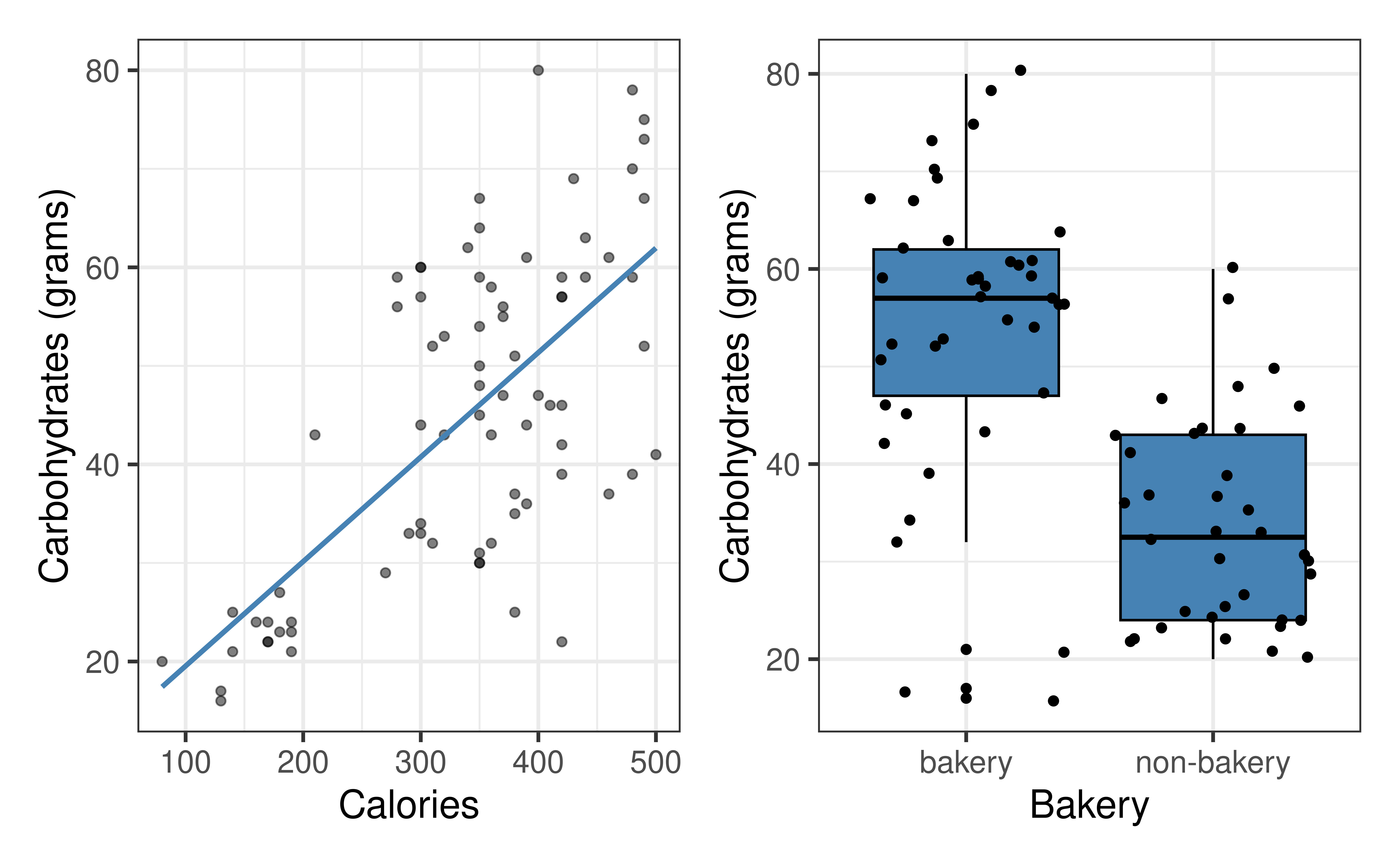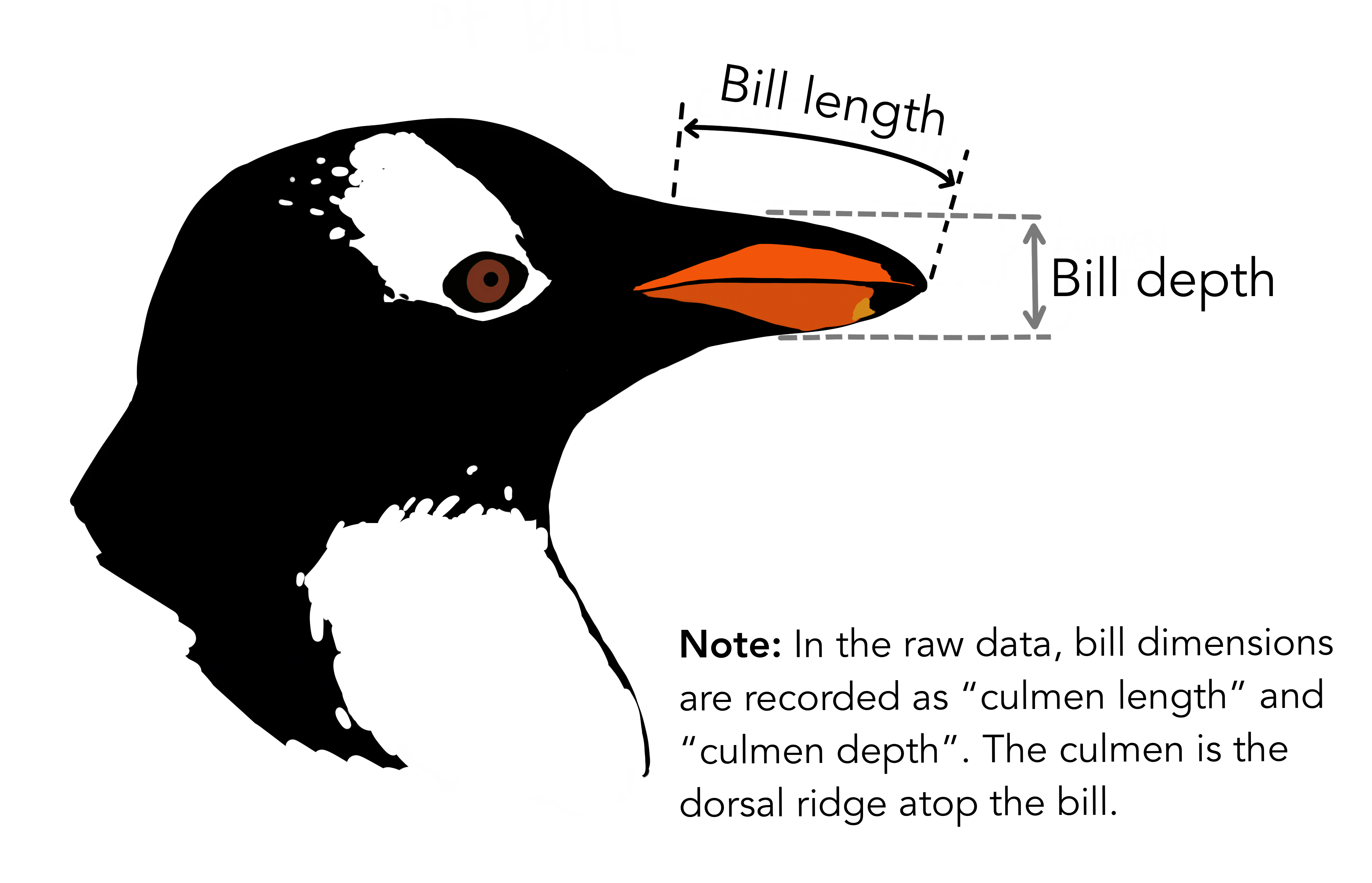Rows: 77
Columns: 8
$ item <chr> "8-Grain Roll", "Apple Bran Muffin", "Apple Fritter", "Banana…
$ calories <int> 350, 350, 420, 490, 130, 370, 460, 370, 310, 420, 380, 320, 3…
$ fat <dbl> 8, 9, 20, 19, 6, 14, 22, 14, 18, 25, 17, 12, 17, 21, 5, 18, 1…
$ carb <int> 67, 64, 59, 75, 17, 47, 61, 55, 32, 39, 51, 53, 34, 57, 52, 7…
$ fiber <int> 5, 7, 0, 4, 0, 5, 2, 0, 0, 0, 2, 3, 2, 2, 3, 3, 2, 3, 0, 2, 0…
$ protein <int> 10, 6, 5, 7, 0, 6, 7, 6, 5, 7, 4, 6, 5, 5, 12, 7, 8, 6, 0, 10…
$ type <fct> bakery, bakery, bakery, bakery, bakery, bakery, bakery, baker…
$ bakery <fct> bakery, bakery, bakery, bakery, bakery, bakery, bakery, baker…








